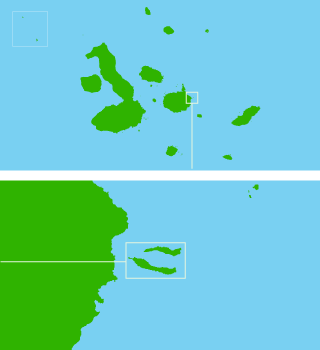|
The visitors site of Plaza Sur Island is located east of Santa Cruz Island, and forms part of two islands known as Islas Plazas. The landing is on the north coast of the island in a channel that separates it from Plaza Norte Island. Plaza Sur has an area of 13 hectares and a height of 25m.
The succulent plant, Sesuvium edmonstonei and Portulaca oleracea, are common in Plaza Sur, the second is the favorite food of the land iguanas.
There are about 1,000 sea lions Zalophus wollebaeki that inhabit this island. On the cliffs located in the south - east of the island, there is a group of lone sea lions, mixed juvenile and adult old and retired
| 

![]()


![]()